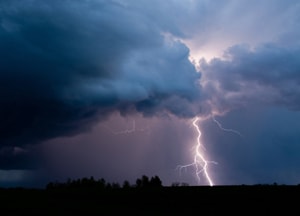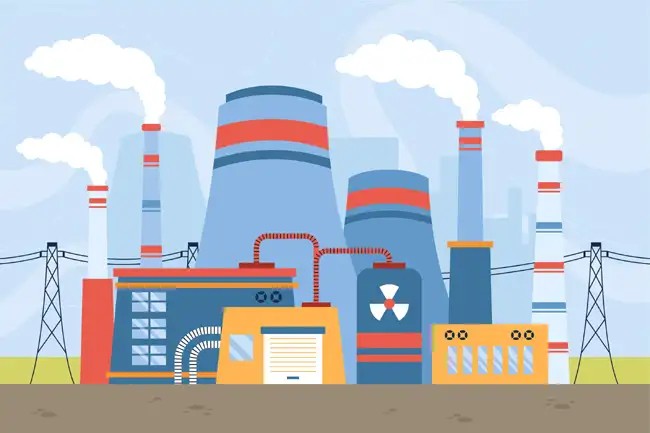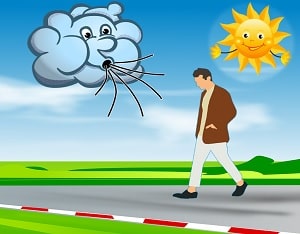Practice Reading & Listening on Thunderstorms Practice Reading & Listening on Thunderstorms for IELTS and TOEFL with a podcast from National Geographic YouTube Channel, illustrated flashcards, text-to-speech and related lessons transcribed by Mortaza Mousavi https://www.youtube.com/watch?v=zUNEFefftt8 Off in the horizon, they rumble. Rolling across the land, they darken the skies to then spark fire in the darkness, letting out an unmistakable roar. What are thunderstorms? Thunderstorms are rain showers accompanied by lightning and thunder. While violent, these weather phenomena are common with about 2,000 occurring at any moment worldwide. Types of thunderstorms There are four major types of thunderstorms. Single-cell, which ...
Home » English Documentaries with Transcript » Practice Reading & Listening on Thunderstorms for IELTS

Practice Reading & Listening on Thunderstorms for IELTS
Updated: by Morteza Mousavi
Time to Read: 3 minutes | 423 Views | 10 Comments on Practice Reading & Listening on Thunderstorms for IELTS



I remember that when I was a child, I enjoyed the sound of rain, thunderstorms, and lightnings as well. There were never considered as scary phenomena for me.
*(They never considered as …)
They were never considered scary phenomena.
I had the same experience. I’m still fond of the sound of rain.
When I was a child I really scared of thunderstorms, it was absolutely really scary at that time for and now I think I still scare of it.
Feedback
* I was scared of
* I’m still scared of it
Off in the horizon they rumble. Rolling across the land, they darken the skies to then spark fire in the darkness. Letting out an unmistakable roar. Thunderstorms are rain showers accompanied by lightning and thunder. While violent, these weather phenomena are common with about 2,000 occurring at any moment worldwide.
There are four major types of thunderstorms. Single-cell, which are small, weak, and isolated storms. Multi-cell, a common of type of storm that includes a cluster of thunderstorms. Squall line, a collection of storms that form a line hundreds of miles long. And supercells, the most intense kind of storm capable of producing tornadoes.
All thunderstorms form when warm air in the lowest layers of the atmosphere rises. Called an updraft, this air causes water from the earth’s surface to evaporate and carries the moisture upward to form clouds.
The clouds then build and grow. Sometimes as tall as 10 miles high. The clouds darken as they fill and become heavy with water. Cool, dry air from the upper layers of the atmosphere known as a downdraft then pull this moisture downward causing it to fall as life-sustaining rain.
In addition to helping sustain life, thunderstorms also help maintain the planet’s balance of energy and electricity. When energy specifically in the form of heat causes water to evaporate, the heat is carried upward with the water vapor. As the vapor condenses and forms water droplets, it releases the heat into the higher altitudes of the atmosphere and cools the earth’s surface.
Thunderstorms also help regulate the electrical balance between the atmosphere and the planet. As clouds in a thunderstorm develop, excess positive and negative charges form within them. At a certain point, this buildup of opposite charges leads to the transfer of electrons in the form of lightening.
This transference of electricity occurs so quickly that it breaks the sound barrier. A phenomenon that produces thunder.
While thunderstorms are necessary for maintaining balance in the atmosphere, they can also be hazardous.
Lightning strikes create fires. Excessive rainfall, can cause flash flooding and high speed winds from tornadoes, can destroy homes. Meteorologists study weather systems to try to predict the occurrence of thunderstorms and help ensure the safety of countless communities.
Thank you so much for your accurate transcription. There were some mistakes, though, which are inconsiderable. A hint for you is not to trust the subtitles 100%. In one part, the subtitle was incorrect.
I will try to be more accurate sir
Fair enough!